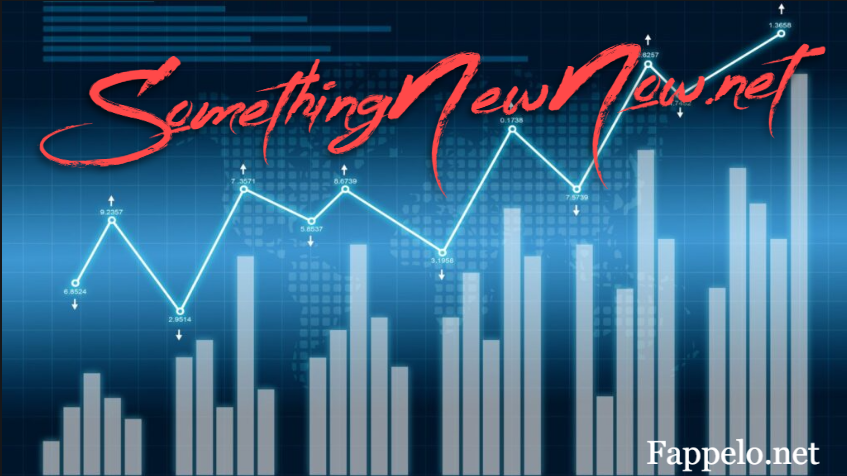Have you ever found yourself staring blankly at loan forms, feeling a bit lost and unsure? I remember my first experience looking for a loan – it was as if I was trying to read an ancient script. But don’t worry; understanding loans doesn’t have to be scary! In this guide, we’re diving into TraceLoans, a helpful resource for all things loans, ensuring you’ll feel equipped and informed.
Understanding TraceLoans: What It Is
Overview of TraceLoans

TraceLoans is a modern solution in the lending landscape. It connects borrowers with lenders in a way that feels personal and accessible. Imagine a bridge that links two sides: one side is filled with people needing loans, and the other is filled with lenders looking to offer them.
What makes TraceLoans stand out? It’s not just about the money. It’s about empowering you with knowledge and options. The platform is designed to simplify the borrowing process, making it easier for you to find the right loan that fits your needs.
Services Offered
TraceLoans provides a variety of services tailored to different borrowing needs. Here’s a quick look at what you can expect:
- Personal Loans: For those unexpected expenses or planned purchases.
- Debt Consolidation: Combine multiple debts into one manageable loan.
- Business Loans: Support for small businesses looking to grow.
- Educational Loans: Financial assistance for students pursuing their studies.
Each service is crafted with flexibility in mind, allowing you to choose the loan amount that works best for your situation.
Who Can Benefit from TraceLoans?
TraceLoans is designed for a wide range of borrowers. Whether you’re a student, a small business owner, or someone looking to consolidate debt, there’s something here for you. But it goes beyond that.
Even those with less-than-perfect credit scores can find options. TraceLoans is dedicated to helping people from all walks of life. If you need a loan and want to understand your options better, you’re in the right place.
Importance of Financial Education
Financial literacy is crucial in today’s world. Do you know the difference between a fixed and variable interest rate? Or how loan terms can affect your monthly payments?
TraceLoans places a strong emphasis on educating its users. They believe that understanding your financial choices leads to better decisions. With resources and tools at your disposal, you can learn the ins and outs of borrowing. As a financial expert once said,
“TraceLoans empowers borrowers with knowledge and accessibility.”
Current Trends in Borrowing
Have you noticed the rise in personal loans lately? Trends show a significant increase in borrowing, especially for personal and educational purposes. People are seeking loans for various reasons, from home improvements to funding education.
TraceLoans is aware of these trends and adapts accordingly. They monitor the market to ensure that their offerings meet current demands. This flexibility is key in today’s fast-paced financial environment.
How TraceLoans Adapts to Market Changes
Market changes can happen overnight. So, how does TraceLoans stay ahead? They keep a close watch on economic shifts and consumer needs.
When interest rates fluctuate, or new borrowing trends emerge, TraceLoans adjusts its services to reflect these changes. This adaptability ensures that you always have access to the best options available.
In a world where financial landscapes can change rapidly, having a reliable partner like TraceLoans can make all the difference.
As you navigate the borrowing process, remember that TraceLoans is here to guide you. They focus on connecting you with the right lending options while prioritizing your understanding of the financial landscape. With their support, you can make informed choices that align with your goals.
Types of Loans Offered
When you find yourself in need of financial assistance, understanding the types of loans available is essential. Different loans serve different purposes, and knowing your options can make a significant difference in your financial journey. Let’s explore some of the most common types of loans you might encounter.
1. Personal Loans
Personal loans are versatile. They can be used for various reasons, such as consolidating debt, covering unexpected expenses, or even funding a vacation. Typically, these loans are unsecured, meaning you don’t need to put up collateral. However, they often come with higher interest rates compared to secured loans.
- Common uses: Emergencies, debt consolidation, medical expenses.
- Loan amounts: Usually range from $1,000 to $50,000.
- Repayment terms: Generally between 2 to 7 years.
Are you facing an unexpected bill? A personal loan might just be the solution you need.
2. Student Loans
Student loans help you pay for education. They can cover tuition, books, and living expenses. These loans can be federal or private, and the terms can vary significantly.
- Federal student loans: Often have lower interest rates and more flexible repayment options.
- Private student loans: Usually require a credit check and may have higher interest rates.
Remember, student loans can vary by state or federal guidelines. So, it’s crucial to research what’s available to you.
3. Home Equity Loans
Home equity loans allow you to borrow against the equity in your home. If you’ve built up some value in your property, this type of loan can provide a lump sum of cash. The interest rates are typically lower than personal loans since your home acts as collateral.
- Loan amounts: Can range from $10,000 to $100,000 or more.
- Repayment terms: Usually 5 to 30 years.
Using a home equity loan for renovations can increase your property value. Just be cautious; if you can’t repay, you risk losing your home.
4. Small Business Loans
If you’re an entrepreneur, small business loans can help you get your venture off the ground. These loans can cover startup costs, inventory, or even operational expenses.
- Types of small business loans: SBA loans, traditional bank loans, and online lenders.
- Loan amounts: Vary widely based on the lender and business needs.
Starting a business can be daunting. But, with the right financing, you can turn your dreams into reality.
5. Secured vs Unsecured Loans
Understanding the difference between secured and unsecured loans is vital. Secured loans require collateral, such as your home or car, which the lender can claim if you default on the loan. Unsecured loans, on the other hand, do not require collateral but often come with higher interest rates.
- Secured loans: Lower interest rates, risk of losing collateral.
- Unsecured loans: Higher interest rates, no collateral needed.
Knowing which type fits your needs can save you money in the long run.
6. Alternative Lending Options
In recent years, alternative lending options have emerged. These include peer-to-peer lending, online lenders, and even crowdfunding. They can be a great option if traditional banks aren’t meeting your needs.
- Peer-to-peer lending: Connects borrowers directly with investors.
- Online lenders: Often have faster approval times and less stringent requirements.
These options can be more accessible, especially for those with less-than-perfect credit. But, always read the fine print!
“Knowing the right loan type is half the battle.” – Loan Advisor
Understanding different loan types is crucial for making informed decisions. Whether you need a personal loan for an emergency or a small business loan to fund your dream, knowing your options can empower you to choose wisely.
Navigating Loan Requirements
Applying for a loan can feel overwhelming. But understanding the requirements can make the process smoother. Here’s a breakdown of what you need to know.
Common Documentation Needed
When applying for a loan, you’ll need to gather several documents. These can vary depending on the type of loan you’re seeking. However, some common items include:
- Proof of Income: This can be pay stubs, tax returns, or bank statements.
- Proof of Residency: Utility bills or lease agreements often suffice.
- Identification: A government-issued ID or passport is typically required.
- Loan Application: Fill out the lender’s application form completely.
Remember, having all your documents ready can save time and hassle. As a financial planner once said,
“Preparation is key when applying for a loan.”
Credit Score’s Role in Loan Approval
Your credit score is a crucial factor in loan approval. It reflects your creditworthiness and financial behavior. Lenders use it to assess risk. A higher score often means better loan terms and lower interest rates.
What’s considered a good credit score? Generally, a score above 700 is viewed positively. But each lender may have different criteria. So, check your score before applying. If it’s low, consider ways to improve it.
Income Verification and Debt-to-Income Ratio
Another essential aspect is income verification. Lenders want to ensure you can repay the loan. They will look at your income sources and may ask for documents like:
- W-2 forms
- Bank statements
- Tax returns
Alongside income, lenders also evaluate your debt-to-income (DTI) ratio. This ratio shows how much of your income goes toward debt payments. Ideally, your DTI should be below 36%. A lower ratio indicates better financial health.
Understanding Collateral in Secured Loans
If you’re applying for a secured loan, you’ll need to understand collateral. This is an asset that you pledge to the lender. If you fail to repay the loan, they can seize the collateral.
Common collateral includes:
- Real estate
- Vehicles
- Bank accounts
Using collateral can sometimes lead to lower interest rates. But it also means higher risk for you. Always weigh the pros and cons before proceeding.
Importance of a Good Repayment Plan
Having a solid repayment plan is vital. It shows lenders you’re responsible. A clear plan can also help you manage your finances better. Consider these points:
- Determine your monthly budget.
- Factor in all your expenses.
- Set aside funds for loan payments.
Being proactive about repayment can prevent future financial strain. Plus, it builds trust with your lender.
Tips to Improve Credit Scores
Improving your credit score takes time, but it’s worth it. Here are some practical tips:
- Pay Bills on Time: Late payments can hurt your score.
- Reduce Debt: Pay down existing debts to lower your DTI.
- Check Credit Reports: Regularly review your reports for errors.
- Avoid New Debt: Limit new credit inquiries before applying for a loan.
By following these tips, you can boost your credit score and improve your chances of loan approval.
Being aware of the requirements can streamline your loan application process. Take the time to prepare, and you’ll feel more confident when approaching lenders.
Financial Planning Strategies for Borrowers
When you’re considering taking out a loan, it’s crucial to have a solid financial plan in place. Without it, you might find yourself in a difficult situation down the line. So, how do you prepare? Here are some essential strategies to guide you through the process.
1. Creating a Budget Before Applying for a Loan
First things first, you need a budget. Think of it as your financial roadmap. It helps you see where your money goes each month. Are you spending too much on dining out? Or maybe on subscriptions you rarely use? By identifying these areas, you can figure out how much you can afford to borrow.
Creating a budget is simple. Start by listing your income and all your expenses. Subtract your expenses from your income. The remaining amount shows how much you can allocate for loan repayments. This step is vital. Remember, a budget can help identify how much you can afford to borrow.
2. Understanding Interest Rates and Fees
Next up is understanding interest rates and fees. These factors play a significant role in how much you’ll pay for your loan. Interest rates can vary widely depending on your credit score, the type of loan, and the lender. A lower interest rate means lower monthly payments.
Don’t forget about fees! Some loans come with origination fees, processing fees, or even prepayment penalties. Always read the fine print. It’s essential to know exactly what you’re getting into.
3. How to Calculate Total Loan Costs
Calculating the total cost of a loan can save you from future headaches. You need to consider the principal amount, interest, and any additional fees. A simple formula to find out the total cost is:
Total Loan Cost = Principal + (Interest Rate x Principal) + Fees
This calculation gives you a clearer picture of what you’ll owe. Knowing the total cost can help you make informed decisions about which loan to choose.
4. Setting Realistic Repayment Goals
Once you’ve taken out a loan, it’s time to set repayment goals. This is about more than just making monthly payments. You should think about how long it will take to pay off the loan and what your budget allows.
Ask yourself: What’s a comfortable monthly payment for you? How can you adjust your budget to meet those payments? Setting realistic goals ensures you won’t stretch your finances too thin.
5. Emergency Funds and Their Importance
Have you ever faced an unexpected expense? It’s stressful, right? That’s why having an emergency fund is essential. This fund acts as a safety net. It helps you cover unexpected costs without falling behind on loan payments.
Financial experts recommend having at least three to six months’ worth of living expenses saved. This way, you can weather any financial storms without jeopardizing your loan repayment.
6. Using Loans Responsibly
Finally, it’s all about using loans responsibly. Loans can be a helpful tool, but they can also lead to financial trouble if mismanaged. Always borrow what you need, not what you want. Stick to your budget and avoid impulse borrowing.
Remember, “A solid financial plan makes borrowing work for you, not against you.” – Financial Consultant. This quote perfectly encapsulates the goal of financial planning.
Planning your finances ahead of taking a loan can avoid future pitfalls. Make sure you understand your financial situation, the terms of the loan, and how it fits into your overall budget. With these strategies in place, you can approach borrowing with confidence.
Common Misunderstandings About Loans
Loans can seem tricky. Many people have misconceptions that can lead to poor financial decisions. Let’s break down some of these misunderstandings. This will help you make informed choices and improve your financial health.
1. Misinterpretations About Loan Terms
Loan terms can be confusing. What does APR mean? How is it different from interest rate? Many borrowers mix these up. The APR (Annual Percentage Rate) includes both the interest rate and any fees. It’s a more accurate reflection of what you’ll pay over the life of the loan. Understanding this can save you money.
Another common term is “collateral.” This is something you pledge as security for the loan. If you fail to pay, the lender can take it. Knowing these terms can help you feel more confident when borrowing.
2. The Myth of Only Banks Providing Loans
Many believe that banks are the only option for loans. This isn’t true. Credit unions and online lenders also provide loans. Credit unions often offer lower rates and fees. Online lenders can be more flexible with qualifications. By exploring these options, you might find better deals.
3. Understanding Prepayment Penalties
Have you ever heard of prepayment penalties? These are fees charged if you pay off your loan early. Some loans have them, while others don’t. It’s essential to read the fine print. If you plan to pay off your loan quickly, look for loans without these penalties. This can save you a lot of cash.
4. Debunking the Idea That Loans Are Always Bad
Loans often get a bad reputation. But are they always bad? Not at all! When used wisely, loans can be beneficial. For example, a student loan can help you gain an education that leads to a better job. A mortgage can help you buy a home. These are examples of good debt. They can enhance your life and build your credit if managed properly.
5. Clarifying the Differences Between Good and Bad Debt
What makes debt “good” or “bad”? Good debt typically has the potential to increase your net worth. This includes mortgages, student loans, and business loans. Bad debt, on the other hand, often comes from high-interest credit cards or loans for things that depreciate quickly, like cars. Understanding this difference can help you make smarter financial decisions.
6. The Realities of Interest Rates
Interest rates can seem like a mystery. They fluctuate based on various factors, including the economy and your credit score. Higher credit scores usually lead to lower interest rates. This is why maintaining good credit is crucial. A lower rate means you’ll pay less over time. Always shop around for the best rate before committing to a loan.
“Education on loans leads to better decisions and less fear.” – Student Loan Advocate
By educating yourself about loans, you can avoid common pitfalls. Each of these misunderstandings can lead to costly mistakes. Clearing up these misconceptions can lead to more informed borrowing choices and better financial health.
In Summary
Loans are not inherently bad. They can be a powerful tool when used wisely. By understanding loan terms, exploring different lenders, and distinguishing between good and bad debt, you can navigate the borrowing landscape with confidence. Remember, knowledge is power. The more you know, the better decisions you’ll make.
FAQs About TraceLoans
Are you considering a loan? You might have a lot of questions. That’s perfectly normal. Understanding the ins and outs of loans can be tricky. But don’t worry, we’re here to help. Below are some frequently asked questions that can shed light on the loan process at TraceLoans.
1. What types of loans can I apply for?
At TraceLoans, you have several options. You can apply for:
- Personal Loans: Great for unexpected expenses or consolidating debt.
- Auto Loans: Perfect for purchasing a new or used vehicle.
- Home Loans: Ideal for buying or refinancing your home.
- Student Loans: Helpful for covering educational costs.
Each loan type serves a unique purpose. Knowing what you need can simplify your decision-making process.
2. How can I improve my chances of loan approval?
Getting approved for a loan can sometimes feel like a game of chance. But there are steps you can take to boost your odds:
- Check Your Credit Score: A higher score can lead to better rates.
- Reduce Your Debt: Lowering existing debt can improve your debt-to-income ratio.
- Provide Accurate Information: Ensure all details on your application are correct.
- Show Stable Income: A steady job can reassure lenders of your repayment ability.
By taking these actions, you can present yourself as a reliable borrower.
3. Are there any hidden fees I should be aware of?
Transparency is key when it comes to loans. At TraceLoans, we strive to be upfront about all costs. However, it’s wise to keep an eye out for potential fees, such as:
- Origination Fees: A one-time fee for processing your loan.
- Late Payment Fees: Charged if you miss a payment deadline.
- Prepayment Penalties: Fees for paying off your loan early.
As the saying goes,
“Always read the fine print!” – Consumer Advocate
. It’s crucial to understand all terms before signing anything.
4. What happens if I miss a payment?
Missing a payment can feel overwhelming. But knowing what to expect can ease your worries. If you miss a payment, you might face:
- Late Fees: Additional charges added to your balance.
- Credit Score Impact: Your score could drop, affecting future loans.
- Potential Default: Continued missed payments could lead to loan default.
If you find yourself in this situation, communicate with TraceLoans. They may offer options to help you get back on track.
5. Can I refinance my loan?
Yes, refinancing is often an option! It allows you to replace your current loan with a new one, usually with better terms. Here’s why you might consider refinancing:
- Lower Interest Rates: You could save money on monthly payments.
- Change Loan Terms: Adjust the duration of your loan to fit your needs.
- Access Cash: You might be able to borrow against your home’s equity.
Before you refinance, weigh the pros and cons. It could be a smart financial move!
6. How does TraceLoans protect personal information?
Your privacy is essential. TraceLoans takes several measures to ensure your personal information is safe:
- Encryption: Your data is encrypted to prevent unauthorized access.
- Secure Servers: They use secure servers to store your information.
- Privacy Policies: TraceLoans follows strict privacy policies to protect your data.
Understanding these protections can help you feel more secure when applying for a loan.
Addressing these common questions empowers you with essential knowledge. The more you know, the better equipped you are to make informed decisions about your financial future. Remember, being well-informed is your best tool when navigating the loan process.
Conclusion: Making Informed Loan Decisions
As we wrap up this guide, it’s crucial to reflect on the key takeaways. You’ve learned about various loan types, how to assess your financial needs, and the importance of making informed decisions. Choosing the right loan isn’t just about getting the lowest interest rate; it’s about finding a solution that fits your unique situation.
sible with loans means understanding your limits and sticking to a budget. It’s about planning for the future while managing your current obligations. Think of it as a balancing act. You want to enjoy today while preparing for tomorrow. Remember, every decision you make today can have a lasting impact on your financial future.
Call to Action for Using TraceLoans for Safe Borrowing
As you consider your borrowing options, think about using TraceLoans. This platform prioritizes safe borrowing practices, providing you with the tools you need to make informed decisions. With resources that guide you through the process, you can feel confident in your choices. Whether you’re looking for a loan for a major purchase or just need some extra cash, TraceLoans can help you navigate your options safely.
In conclusion, take the lessons learned from this guide to heart. Reflecting on earlier points helps solidify your learning experience and encourages action. The world of borrowing can be daunting, but with the right information and support, you can make choices that lead to financial success. Remember, the journey to financial wellness starts with you. Make informed choices, and you’ll be on the right path.



